
Few cities capture Hokkaido’s charm quite like Hakodate. Once the gateway to the world as Japan’s first international port, it now offers travelers a mix of history, culture, and incredible views. From churches and monuments to bustling markets and mountaintop vistas, these 18 must-do experiences show why Hakodate is a northern wonderland worth exploring.
(Main image: PIXTA)
(This article contains affiliate links)
- Table of Contents
-
- 1. Enjoy a Romantic night View From Mt. Hakodate Observation Deck
- 2. Visit Hakodate's Majestic Hallast Orthodox Church
- 3. See Japan’s oldest historical church, Motomachi Roman Catholic Church
- 4. Visiting the Star-Shaped Fortress, Goryokaku Park
- 5. Go Hakodate Souvenir Shopping at Kanemori Red Brick Warehouse Group
- 6. Hakodate Morning Market
- 7. Onuma Park
- 8. Catch the View of Hakodate Port
- 9. Hike Mt. Esan
- 10. Old Soma Residence
- 11. Former British Consulate of Hakodate
- 12. Trappistine Monastery
- 13. Chow Down on Seafood Bowls
- 14. Hakodate Ramen
- 15. Mizunashi Kaihin Onsen: Hot Springs Bubbling Up from the Sea
- 16. Cape Tatematsu: A Scenic Spot Overlooking the Tsugaru Strait
- 17. Shikabe Geyser: A Powerful, Dynamic Gush of Nature
- 18. Major Festivals and Events to Enjoy in Hakodate
1. Enjoy a Romantic night View From Mt. Hakodate Observation Deck
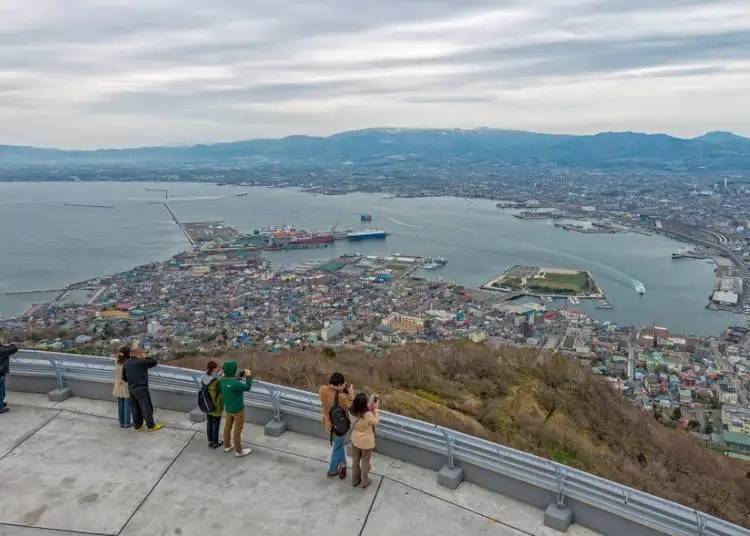
Located in the southwestern part of Hakodate City stands Mt. Hakodate, 334 meters above sea level. There is an observation deck at the summit of the mountain, accessible via ropeway, bus, and taxi.
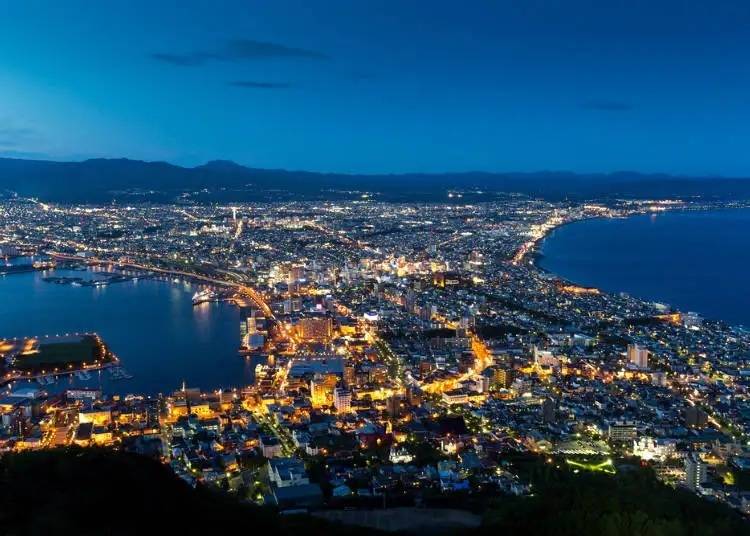
As seen from the observation deck, the night view of Hakodate is said to be the most impressive night view in Japan and was included amongst the top three best night views in the world. It's the first point of interest on any list of things to do in Hakodate.
The beautiful curves that lie between the Tsugaru Strait and Hakodate Port with the scattered lights of Hakodate City have been nominated as the reason behind its magnificent beauty. The landscape has been likened to a box of jewels.
Because of its nighttime popularity and the crowds that come with it, we recommend arriving before sunset to grab the best spot for photos.
In summer, you can enjoy the night view and sunset from the summit of Mount Hakodate while feeling the cool breeze.
The best season for sightseeing in Hakodate is summer. However, you can really enjoy a romantic snowy view during the winter season. With the lights reflected off the snow, the beauty of the night view is even more amplified.
2. Visit Hakodate's Majestic Hallast Orthodox Church

Nestled on the slope of Motomachi stands the Russian Orthodox Church, with its impressive white walls and cupolas (dome-style towers). Constructed in 1861 as an attached chapel of the Russian Consulate by priest Nikolai, who was assigned to advocate the missionary work of the Russian Orthodox to Hakodate in 1961.
The first sanctuary was destroyed by the Great Hakodate Fire of 1907 and was reconstructed into the current shrine of today in 1916, incorporating the Russian Byzantine style. It was designated as a Cultural Property of Japan in 1916.
The sound of this chime is also considered one of the 100 Soundscapes of Japan. Alongside the church is a steep slope known as the "Cha Cha Nobori," from which you can see the two churches, the Hakodate Christian Orthodox Church and Hakodate St. John's Church.
-

-
Address
3-13 Motomachi, Hakodate City, Hokkaido, 040-0054
View Map -
Nearest Station
Hakodate Station (Hakodate Main Line)
- Phone Number 0138-27-3333
-
Address
3-13 Motomachi, Hakodate City, Hokkaido, 040-0054
3. See Japan’s oldest historical church, Motomachi Roman Catholic Church


At the top of the Daisan-zaka slope stands a Gothic-style church marked by its large bell tower. One of the oldest churches in the country, along with those in Yokohama and Nagasaki, it is a symbol of the resurrection of the mission of Christianity.
A temporary cathedral was built in 1867, and the first church was established in 1877, however, was destroyed by the great fire. The current building was restored in 1923.
4. Visiting the Star-Shaped Fortress, Goryokaku Park

Another place that should top any list of things to do in Hakodate is a visit to Goryokaku Park.
Constructed in the 1860s, Goryokaku was Japan's first French architectural fortress and is characterized by its pentagonal star shape. It was the last base of the Shogunate Army in the Battle of Hakodate, the war between the new government forces and the former shogunate army after the reconciliation, but was surrendered in 1869.
Goryokaku is currently maintained as a park where you can freely stroll. It takes about 30 minutes to walk the perimeter. Remnants from the Battle of Hakodate, such as cannons and stone walls, can be seen throughout, and you can even enjoy boating along the moats in the summertime.

The Hakodate magistrate office in the center of the park was established by the Tokugawa shogunate in 1864 as the base of the Ezo rule. It was dismantled after the Hakodate war, but in 2010 it was restored in its original Edo era style. You can see exhibitions of the history of Goryokaku and the restorative works in a 72-tatami mat room.

Goryokaku Park is a place where you can experience the beauty of all four seasons.
In spring, it is renowned as one of Hakodate’s best cherry blossom spots, with around 1,600 Somei Yoshino and double cherry trees blooming in full glory. During peak season, the cherry blossom festival draws crowds of visitors enjoying the festive atmosphere.
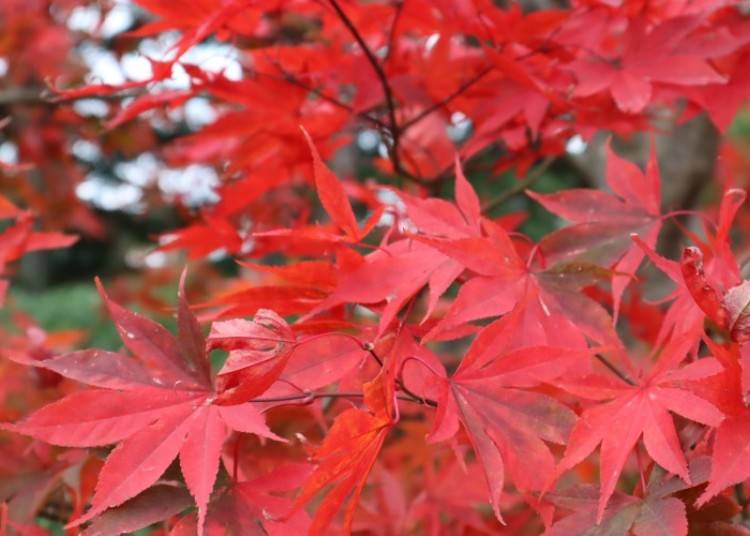
In autumn, the park is famous for its vibrant foliage. The ginkgo and maple trees turn brilliant shades of red and yellow, and strolling against the backdrop of Goryokaku’s star-shaped fort creates a picturesque, almost painting-like scene.
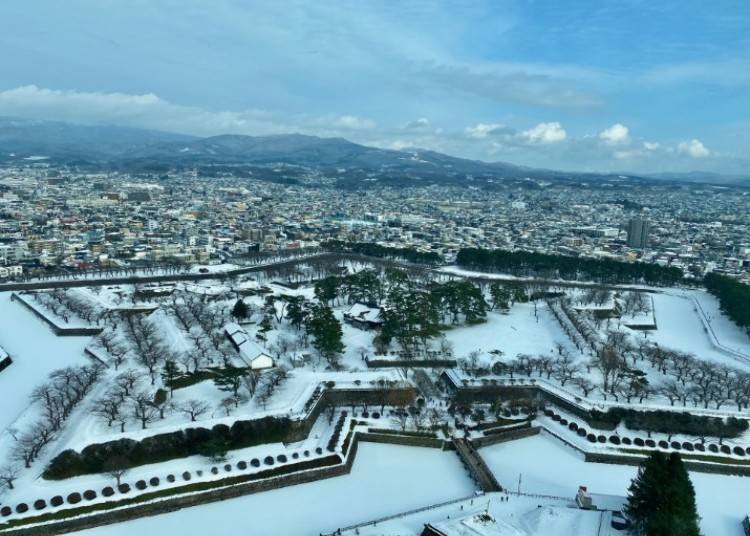
In winter, Goryokaku transforms into a magical snowscape. Visitors can enjoy peaceful walks through the snow-covered grounds, while illuminations and snow lantern events add a romantic touch to the historic site.

You can see the pentagonal star shape from atop Goryokaku Tower. The tower stands adjacent to the park at 107 meters high. There are shops and restaurants on the 1st and 2nd floors and observation decks at the 86 and 90-meter points. From the observation decks, you can see the entire Goryokaku Park and the expansive 360 panoramic views from Hakodate City to Mt. Hakodate.
-

-
Address
43-9 Goryokaku-cho, Hakodate-shi, Hokkaido, 040-0001
View Map -
Nearest Station
Hakodate Station (Hakodate Main Line)
- Phone Number 0138-51-4785
-
Address
43-9 Goryokaku-cho, Hakodate-shi, Hokkaido, 040-0001
5. Go Hakodate Souvenir Shopping at Kanemori Red Brick Warehouse Group

Facing Hakodate Port in the Bay Area stands the Kanemori Red Brick Warehouse, a group of brick warehouses. In the front is the Kanemori Youbutsukan or the "Western Museum."

It was originally built as a business warehouse in the Meiji Era but has been renewed and rebuilt as a shopping center.
A variety of shops line the hall, including about 20 shops that sell items from jewelry to Hakodate souvenirs, clothing and miscellaneous goods, and even some tax-free shops. There are even cafes in which you can easily enjoy delicious Hakodate sweets.

There are also shops and restaurants in the neighboring Hakodate Bay area, as well as glass craft shops and beer halls in Hakodate History Plaza.
Many shops sell items unique to Hakodate, such as soap made from Hakodate kelp, and squid-ink dyed cloth bags and pouches. At night, you can enjoy a romantic view as the exterior wall is lit up.

In the Hakodate Meiji Hall, you will also find specialty shops such as a music box store, and a store featuring glass goods.
6. Hakodate Morning Market

Just steps from Hakodate Station, the Hakodate Morning Market (Hakodate Asaichi) is one of the city’s must-visit spots for both travelers and locals. With around 250 stalls and shops, the market bustles with energy from the early hours, making it a perfect destination for breakfast if you’re an early riser.

The offerings here reflect the bounty of Hakodate and greater Hokkaido: glistening fresh seafood, seasonal vegetables, colorful fruits, dried foods, chinmi (traditional processed seafood delicacies), and even sweets and clothing. At the heart of the market is Donburi Yokocho, a lively food court where you can savor steaming bowls of seafood donburi piled high with crab, scallops, or salmon roe.

For something more interactive, head to the Ekini Market corner and try squid fishing—a local favorite. For about 600 to 2,000 yen (depending on the size of the catch, cooking fee included), you can fish a live squid straight from the tank and enjoy it prepared on the spot. The taste of freshly caught squid, sometimes paired with “ikagoro” (squid intestines), is a must-try local delicacy.
7. Onuma Park

Located just north of Hakodate, Ōnuma is a small nature resort area in a quasi-national park, dominated by an active volcano Mt. Komagatake.

Visitors can enjoy outdoor activities such as camping and cycling in a wonderful landscape of mountains, lakes and forests, all only 30 minutes by express train from JR Hakodate Station.
In addition, Onuma Park hosts a fireworks festival every summer along the lakeside, where the fireworks reflected on the water together with the natural scenery create a beloved summer tradition.

-

-
Address
Onumacho, Nanae-cho, Kameda-gun, Hokkaido, 041-1354
View Map -
Nearest Station
Onumakoen Station (Hakodate Main Line)
- Phone Number 0138-67-2170
-
Address
Onumacho, Nanae-cho, Kameda-gun, Hokkaido, 041-1354
8. Catch the View of Hakodate Port

A popular sightseeing spot, the Bay Area of Hakodate offers extensive views of the city's attractive port.

Home to the famous Kanemori Red Brick Warehouses, visitors can stroll along stone walkways complete with old-fashioned street lights, while the shimmering reflections and night views are particularly beautiful after dark.
9. Hike Mt. Esan

Mt. Esan is an active volcano located just a short distance east of Hakodate on the Kameda Peninsula.

The summit sits 618m above sea level and is home to sulfur-belching steam vents and wonderful panoramic views.

It takes about one hour to hike to the top of the mountain from the car park at its foot.
-
Mt. Esan恵山
- Address Misakicho, Hakodate, Hokkaido 041-0521
10. Old Soma Residence

The Old Soma Residence is located next to Motomachi Park and was the private home of a well-known and wealthy merchant called Soma Teppei.

Built in 1908, the residence houses many interesting paintings, documents and antiques and is notable for an architectual style which is representative of Hakodate.

-
Former Soma Residence旧相馬邸
- Address 33-2 Motomachi, Hakodate, Hokkaido 040-0054
- Phone Number 0120-210-289
・Hours: 9:30 AM–4:30 PM (last entrance 4 PM); in April (excluding Golden Week), closes 4 PM (last entrance 3:30 PM)
・Closed: (April–October) Wednesdays and Thursdays; in August 2025 closed Mondays–Thursdays (open daily August 8–17); (November–March) closed in winter
・Admission: 1,000 yen
・Access: About 5 minutes’ walk from Suehirocho Station
11. Former British Consulate of Hakodate

An attractive building which was used as the British Consulate between 1913 and 1934, it now functions as a small and well-preserved museum, and displays inside chart the history of Hakodate up until the opening of the port. The tea room is particularly popular, and guests can enjoy sipping black tea as they admire the attractive English-style rose garden.
-

-
Address
33-14, Motomachi, Hakodate-shi, Hokkaido, 040-0054
View Map -
Nearest Station
Hakodate Station (Hakodate Main Line)
- Phone Number 0138-27-8159
-
Address
33-14, Motomachi, Hakodate-shi, Hokkaido, 040-0054
12. Trappistine Monastery

One of Hakodate's many notable western-style institutions, this impressive building in beautifully manicured grounds serves as a Catholic convent.

Founded at the end of the 19th century, the existing church building dates back to 1927. It displays a mix of Gothic and Romanesque styles, including features such as high-quality exterior brickwork and semicircular-arched windows.
In autumn, the trees in the grounds and gardens turn shades of red and yellow, allowing visitors to enjoy the beautiful foliage in a serene atmosphere.
-
Trappistine Monastery天使の聖母トラピスチヌ修道院
- Address Trappistine Monastery, 346 Kamiyugawa-cho, Hakodate, Hokkaido 042-0914, Japan
- Phone Number 0138-57-2839
・Hours: (March, April, October, November) 8:30 AM–4:30 PM; (May–September) 8:30 AM–5 PM; (December–February) 9 AM–4 PM
・Closed: December 29–January 3, occasional temporary closures
・Admission: Free
・Access: About 40 minutes by Goryokaku Tower–Trappistine Shuttle Bus (Route 5) from Bus Stop No. 11 at Hakodate Station bus terminal
13. Chow Down on Seafood Bowls

As a city surrounded by the ocean on three sides, Hakodate's seafood is as fresh as it comes. The "seafood bowl" (kaisendon) is, therefore, one of Hakodate's must-try dishes and looks as good as it tastes.
Usually made from a mixture of various kinds of seafood, including slices of tuna, salmon, scallops, shrimp, crab, squid, fish roe, and sea urchin, all served on a bed of fluffy rice. A good chance to enjoy some of the freshest seafood in Japan!
14. Hakodate Ramen

Ramen is one of the most popular dishes in Japan, and comprises of noodles served in a delicious broth. The flavor of the soup base tends to differ from region to region, with the Hakodate variety being characterized by a light salty taste. This is fairly typical of ramen in Hokkaido, as kelp or seafood is added to the standard chicken or pork soup base to create a unique and traditional flavor.
15. Mizunashi Kaihin Onsen: Hot Springs Bubbling Up from the Sea
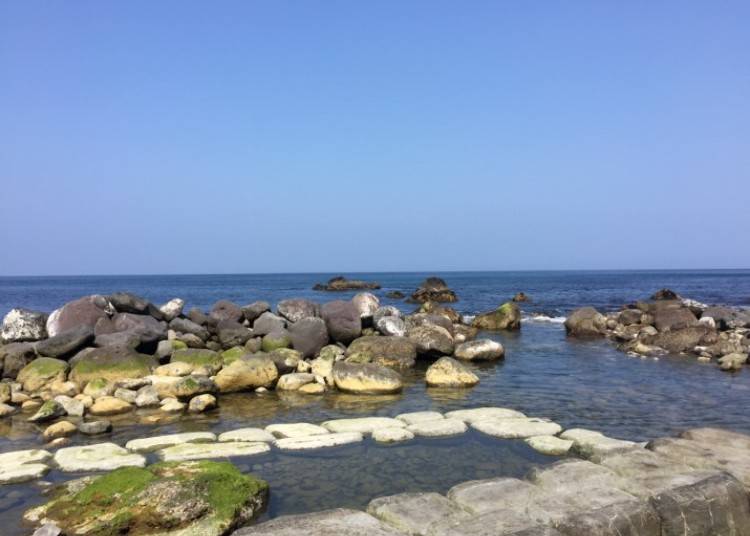
At the southern tip of Hakodate City, in the Esan area, lies Mizunashi Kaihin Onsen, a rare natural seaside hot spring that wells up from the rocky shore.
The most distinctive feature is that the hot spring changes with the ebb and flow of the sea. At low tide, outdoor baths emerge among the rocks, allowing visitors to soak while listening to the sound of the waves and enjoying stunning coastal views. But when the tide rises, the pools sink beneath the seawater, making bathing impossible. The fact that bathing hours are determined entirely by nature’s rhythm adds to the uniqueness.
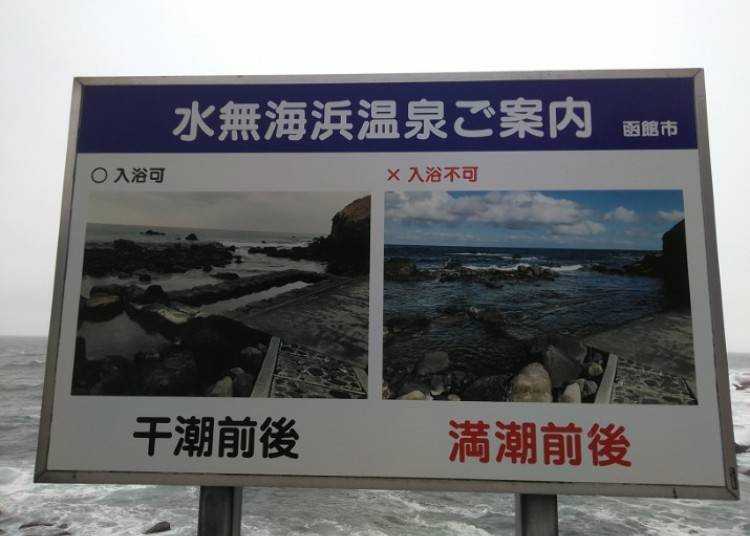
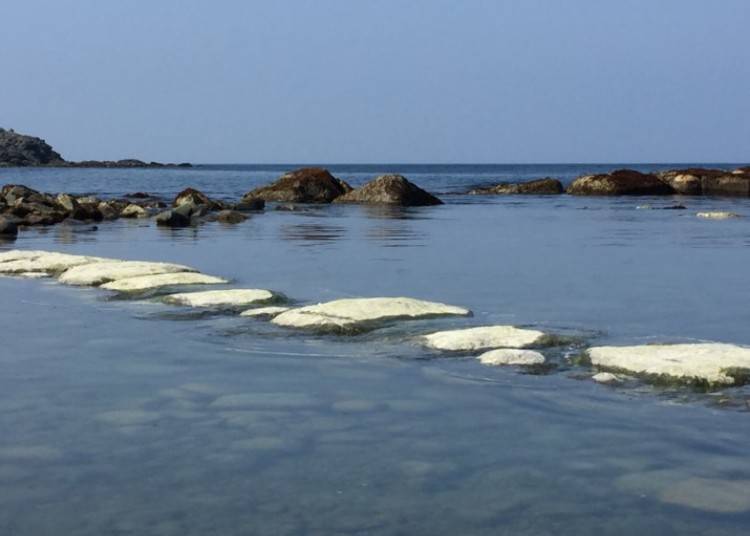
Facilities are minimal—just a small changing hut—so guests can enjoy a wild, close-to-nature experience while feeling the sea breeze. This unusual setting attracts not only tourists but also avid hot spring enthusiasts. Checking the tide schedule in advance is essential when planning a visit.
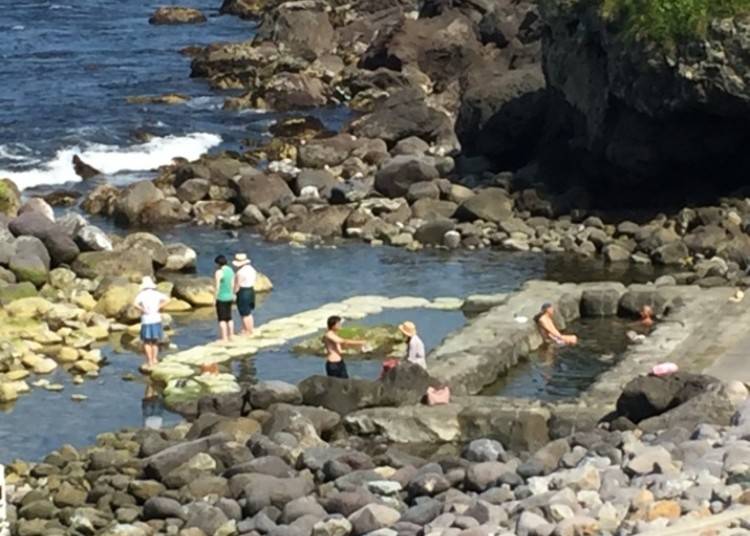
Wearing a swimsuit is recommended, but if you’re feeling adventurous, you might even try bathing nude.
-
Mizunashikaihin Hot Spring水無海浜温泉
- Address Esanmisakicho, Hakodate, Hokkaido 041-0605
- Phone Number 0138-86-2111
16. Cape Tatematsu: A Scenic Spot Overlooking the Tsugaru Strait
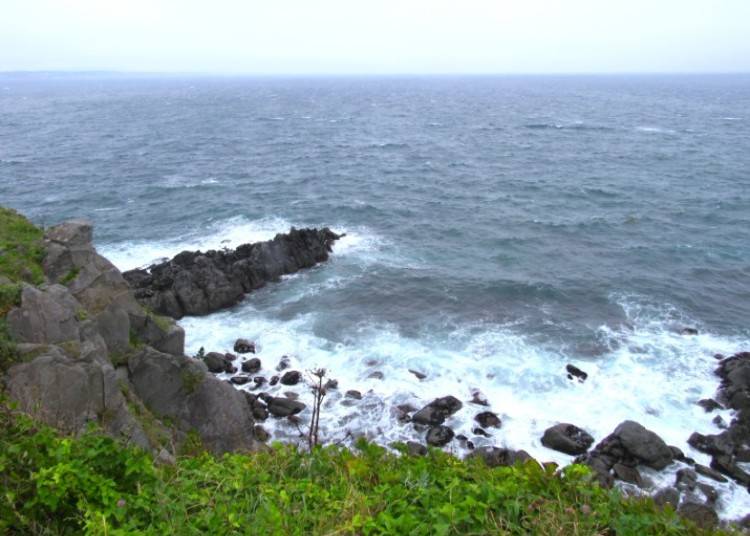
Cape Tachimachi, which juts out from the southern tip of Mount Hakodate, is known as a scenic spot offering sweeping views of the Tsugaru Strait. Below the cape, steep cliffs stretch out dramatically, and on clear days, you can even catch sight of the Shimokita Peninsula on the Honshu mainland.

Another appeal of this cape is its easy access from the city center; it’s within walking distance of the Hakodate City Tram terminal station.
-
Cape Tachimachi立待岬
- Address 9-9 Sumiyoshicho, Hakodate, Hokkaido 040-0045
- Phone Number 0138-21-3323
17. Shikabe Geyser: A Powerful, Dynamic Gush of Nature
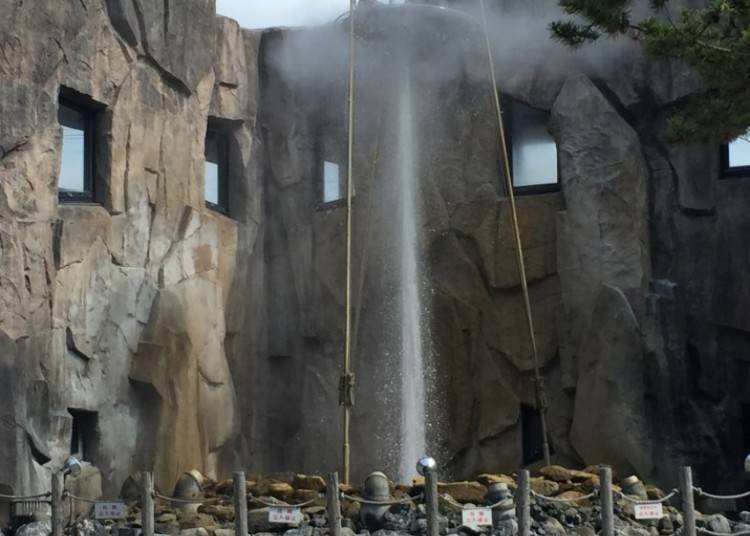
Located in Shikabe Town on the eastern side of the Oshima Peninsula, Shikabe Geyser is a natural hot spring that shoots out boiling water and steam at regular intervals, powered by underground heat and pressure. Reaching heights of around 15 meters, the dynamic spectacle conveys the very heartbeat of the earth. The geyser erupts consistently throughout the day, so visitors are guaranteed to witness the moment whenever they stop by.
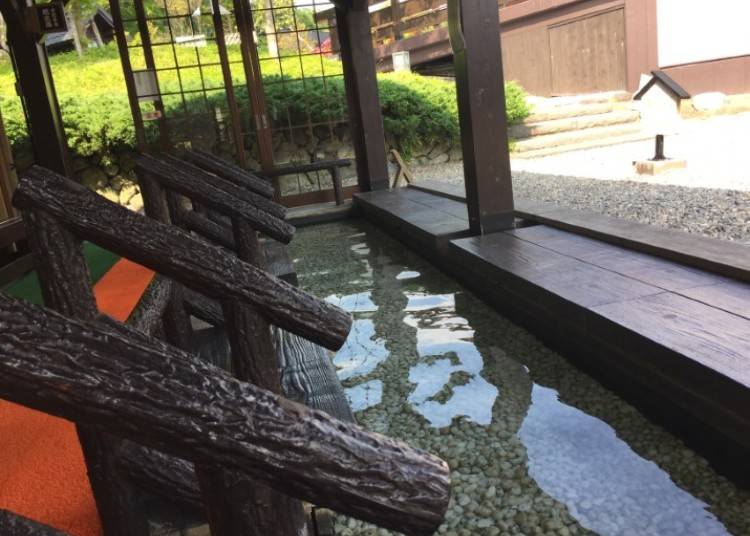
The facility also features a footbath heated by the hot spring, where guests can relax while watching the geyser spout into the sky.
In addition, the adjoining Shikabe Geyser Park offers opportunities to savor local specialties. One of the most popular experiences is the hot spring steam cooking, where fresh seafood and vegetables from Shikabe are cooked with natural geothermal steam, allowing visitors to enjoy the ingredients’ authentic flavors.
-
Shikabe Kanketsusen Parkしかべ間歇泉公園
- Address 252-14 Shikabe, Kayabe District, Hokkaido 041-1402
- Phone Number 01372-7-5655
18. Major Festivals and Events to Enjoy in Hakodate
Encountering a local festival while traveling offers a chance to experience the traditions, culture, and energy of the people—something beyond what ordinary sightseeing can provide. The added sense of excitement and interaction makes the memories of your trip even more colorful and meaningful. Here, we’ve listed some of Hakodate’s major festivals and large-scale events.
Hakodate Park Cherry Blossom Festival

Hakodate Park, known as one of the city’s top cherry blossom spots, comes alive in vibrant colors during this spring festival. Visitors can enjoy food stalls and special events while viewing the blossoms in full bloom, making it a perfect way to feel the arrival of spring.
When: Late April to early May
Where: Hakodate Park
Hakodate Goryokaku Festival
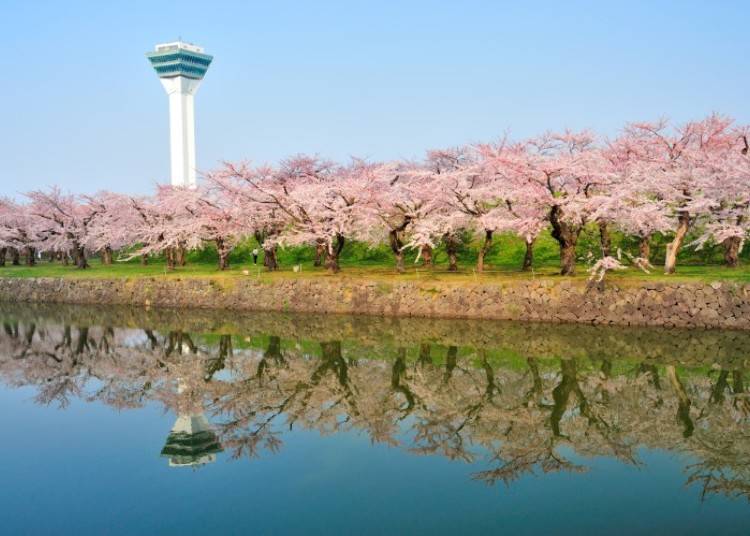
The Hakodate Goryokaku Festival commemorates the history of Goryokaku, the star-shaped fort tied to the Boshin War, which marked the end of the samurai era. Highlights include the Hijikata Toshizo Contest and the Ishin Procession, along with a wide variety of performances such as sword-fighting demonstrations, brass band music, singing, and dancing. The event beautifully blends tradition with modern entertainment.
When: Mid-May
Where: Goryokaku Park
Lake Onuma Festival

This summer festival is known for its lantern floating ceremony and spectacular fireworks show along the lakeshore. The natural setting and tranquil waters create a magical atmosphere, making it an unforgettable summer memory. Visitors can also enjoy performances such as brass band music, Tsugaru shamisen, and magic shows.
When: Late July
Where: Onuma Park Plaza
Hakodate Port Festival
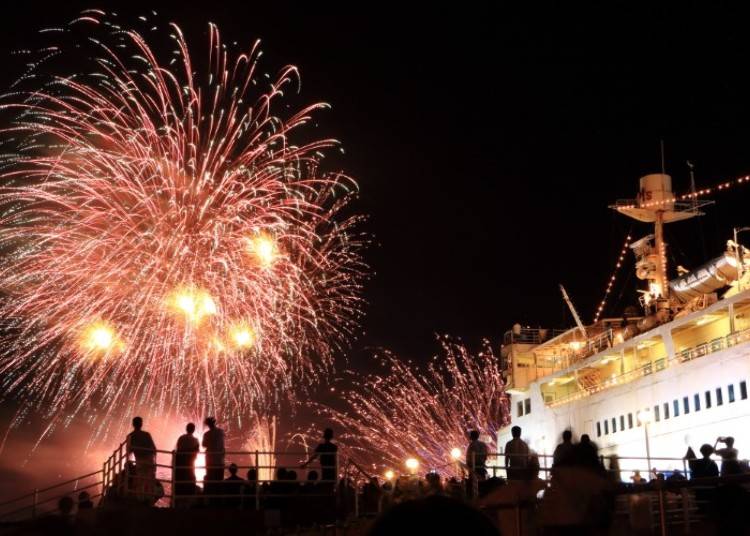
Held in early August, this is the biggest event in Hakodate.
On the first day, spectacular fireworks light up the harbor, followed by a parade featuring numerous floats and various traditional dances performed mainly by local residents.

Over the course of five lively days, more than 20,000 people take part in the festivities. One of the highlights is the famous Hakodate Squid Dance, whose simple moves make it easy for even beginners to join in—visitors are warmly encouraged to participate.
When: Early August
Where: Around the Seikan Ferry Memorial Ship Mashu-maru and the Bay Area near Kanemori Red Brick Warehouses
Gourmet Wonder Park Hakodate

This food festival brings together a wide variety of gourmet flavors from across Japan and abroad. In addition to Hakodate’s fresh seafood and local specialties, visitors can also savor the tastes of the city’s international sister and partner cities, making it a truly multicultural event.
When: September
Where: Around Hakodate Green Plaza
Hakodate Western District Bar-Gai
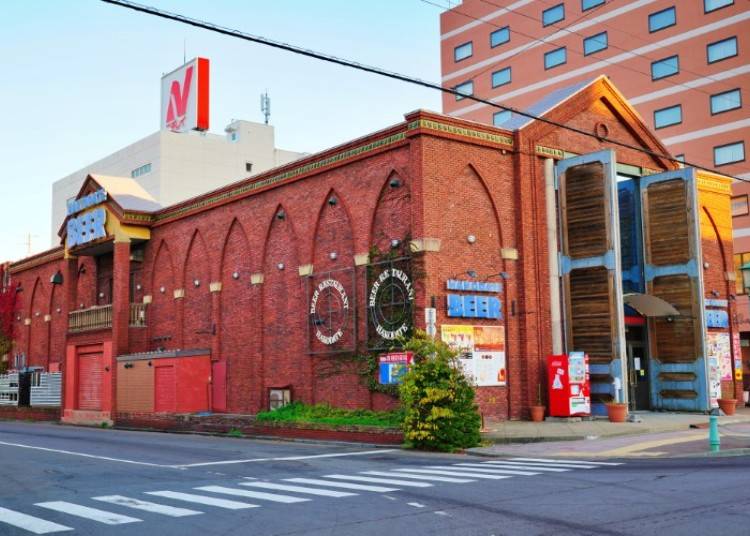
This ticket-based event invites participants to explore the bars and restaurants of Hakodate’s western district. Visitors purchase a booklet of five “Bar-Gai” tickets in advance and can use them freely at about 70 participating establishments listed on the event map. It’s not only a chance to enjoy diverse flavors, but also to stroll through the historic streets and fully experience Hakodate’s nightlife.
When: Twice a year (spring and autumn)
Where: Throughout the Hakodate western district
Hakodate Illumination (December-February)

Held from December 1st to late February, Hakodate's picturesque streets are lit up with around 50,000 lights to create atmospheric night views only seen in the winter.
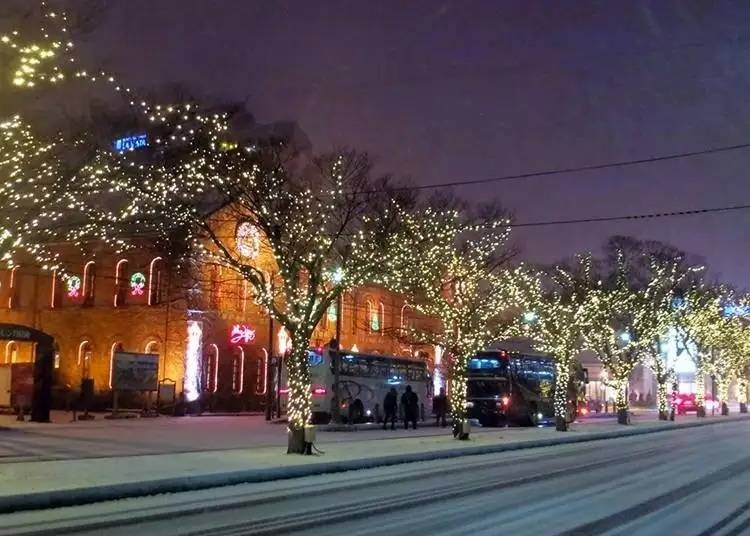
The sloping Hachimanzaka and Nijukkenzaka streets are lined with trees which are lit up and glitter especially brightly when fresh snow lies on the ground. Churches, the Old Public Hall and many buildings in the Bay area are lit up too, so wrap up warm to enjoy the spectacle while strolling the streets. The illuminations can be seen daily from 5pm to 10pm.
Hakodate Christmas Fantasy
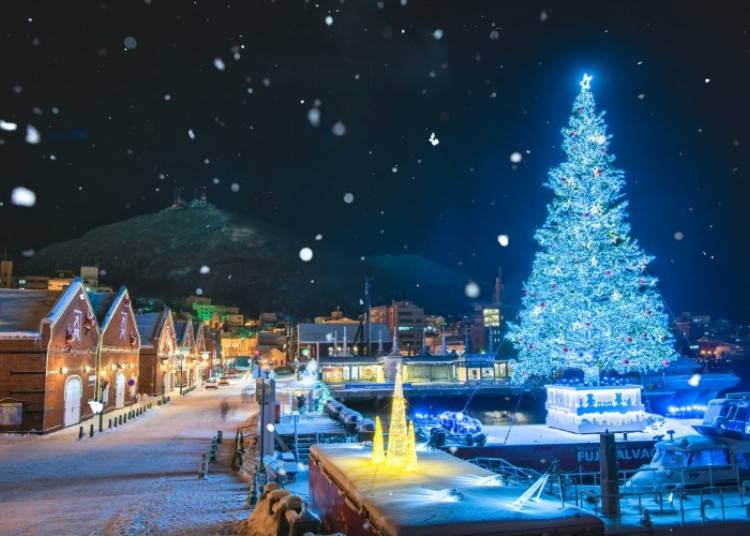
A massive Christmas tree, dazzling illuminations, and festive fireworks transform the port town into a winter wonderland. This romantic event has become an essential highlight of winter tourism in Hakodate.
When: Late November to late December
Where: Bay Area near the Red Brick Warehouses
- Area
- Category
*Prices and options mentioned are subject to change.
*Unless stated otherwise, all prices include tax.
Popular Tours & Activitiess
Recommended places for you
-
Appealing

Sapporo Ramen Yokocho
Ramen
Sapporo / Chitose
-
Appealing

Odori Park
Parks
Sapporo / Chitose
-
Appealing

Otaru Canal
Rivers, Lakes & Canyons
Otaru
-
Appealing

Rukku and Uohei
Izakaya
Sapporo / Chitose
-

LakeAkan
Rivers, Lakes & Canyons
Abashiri
-

Niseko Village Ski Resort
Skiing & Snowboarding
Niseko / Rusutsu
-
Ad

Smart Ways to Avoid Crowds and Enjoy a Safe, Comfortable Trip to Noboribetsu Onsen
-

BIGGEST SALE ALERT! SATUDORA Tax-Free Winter Sale: Stack Coupons for Massive Savings!
by: Guest Contributor
-

Expert-Recommended: 9 Hakodate Hotels Serving Up the Best Breakfasts in Town
by: Nobuka Kawashima
-
Ad

Sapporo SATUDORA Shopping Guide: Get Souvenirs, Medicine & More at This Iconic Drugstore (Special Deal Inside!)
-

Beyond Hakodate and Matsumae: Enjoy the Hidden Gems of Hokkaido’s Donan Area
-

Great Local Eats: 5 Expert-Recommended Local Chain Restaurants in Hakodate
by: Nobuka Kawashima
-

Where to Stay in Noboribetsu Onen: 6 Ryokan Hotels in Hokkaido's Spa Wonderland
by: Masakazu Yoshida
-

Why Hokkaido University Campus is a Must on a Trip to Northern Japan
-

Japan's Bath Culture: Tips You Should Know!
-

Healthcare in Japan for Tourists: What to Do When You Get Sick or Injured in Japan
-

Top 28 Things to Do in Otaru: From Charming Canals to LeTAO, Seafood Delights, and Stunning Night Views
by: Guest Contributor
-

Day Trip from Sapporo to Otaru: Access, Itinerary & Food Guide
by: Guest Contributor
- #best sushi hokkaido
- #things to do hokkaido
- #best ramen sapporo
- #what to bring to japan
- #new years in tokyo
- #what to buy in ameyoko
- #japanese nail trends
- #what to do in odaiba
- #onsen tattoo friendly tokyo
- #daiso
- #best sweets otaru
- #japanese fashion culture
- #best nature furano
- #japanese convenience store snacks
- #best japanese soft drinks
































